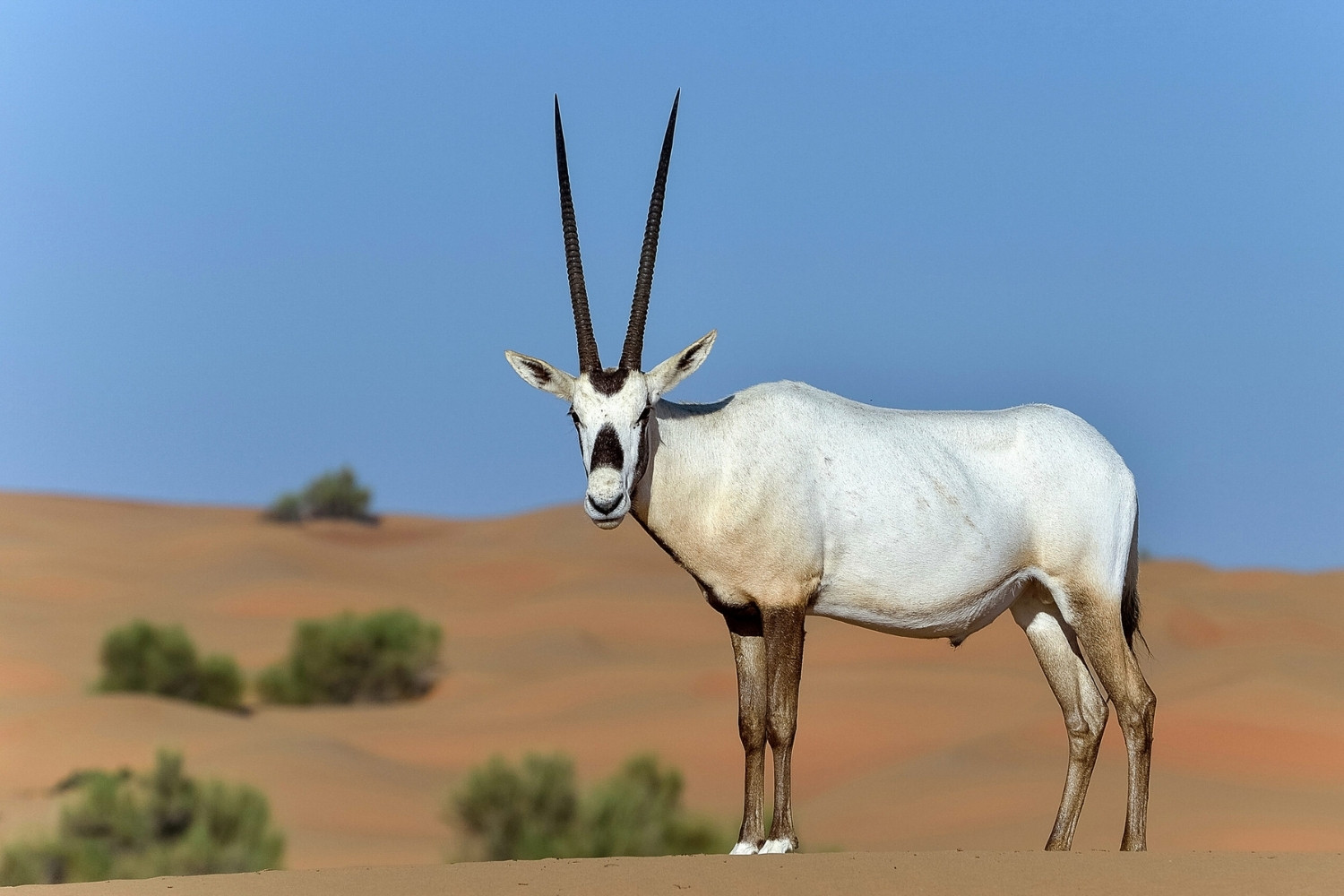
What is an oryx? These majestic creatures, known for their striking appearance and impressive horns, belong to the antelope family. Found mainly in arid regions of Africa and the Arabian Peninsula, oryxes have adapted remarkably well to harsh desert environments. With their long, straight horns and distinctive markings, they are easily recognizable. Oryxes are herbivores, primarily grazing on grasses, but they can survive on sparse vegetation when necessary. They have a unique ability to go without water for extended periods, making them true desert survivors. Their social structure typically involves small herds, which provide protection against predators. Fascinatingly, oryxes can regulate their body temperature to cope with extreme heat.
What is an Oryx?
Oryx are large antelopes known for their striking appearance and impressive horns. These majestic creatures roam the arid regions of Africa and the Middle East. Let's dive into some fascinating facts about oryx.
-
Distinctive Horns: Oryx have long, straight horns that can reach up to 30 inches in length. Both males and females sport these impressive weapons.
-
Four Species: There are four species of oryx: the Arabian oryx, the Scimitar oryx, the East African oryx, and the Gemsbok.
-
Desert Dwellers: Oryx are well-adapted to desert life. They can survive without water for long periods, extracting moisture from the plants they eat.
-
Social Animals: These antelopes are social creatures, often found in herds ranging from a few individuals to several dozen.
-
Speedy Sprinters: Oryx can run at speeds of up to 60 km/h (37 mph), making them one of the fastest antelopes.
Adaptations for Survival
Living in harsh environments requires unique adaptations. Oryx have evolved several traits to thrive in their arid habitats.
-
Efficient Water Use: Oryx kidneys are highly efficient, allowing them to conserve water and survive in extreme heat.
-
Reflective Coats: Their light-colored coats reflect sunlight, helping to keep them cool in the scorching desert sun.
-
Temperature Regulation: Oryx can raise their body temperature to avoid sweating and conserve water.
-
Diet Flexibility: They can eat a variety of plants, including tough grasses and thorny shrubs, which many other animals avoid.
-
Nocturnal Habits: To avoid the heat, oryx often feed during the cooler nighttime hours.
Conservation Status
Oryx face various threats, but conservation efforts are helping to protect these magnificent animals.
-
Arabian Oryx Recovery: The Arabian oryx was once extinct in the wild but has been reintroduced through successful breeding programs.
-
Scimitar Oryx Extinction: The Scimitar oryx is extinct in the wild, but captive breeding programs aim to reintroduce them to their natural habitats.
-
Protected Areas: Many oryx populations live in protected reserves and national parks, safeguarding them from poaching and habitat loss.
-
International Cooperation: Countries are working together to ensure the survival of oryx through cross-border conservation initiatives.
-
Community Involvement: Local communities play a crucial role in oryx conservation by participating in monitoring and protection efforts.
Cultural Significance
Oryx hold a special place in the cultures and traditions of the regions they inhabit.
-
Symbol of Beauty: In many cultures, oryx are seen as symbols of beauty and grace.
-
Mythical Creatures: Oryx have inspired myths and legends, often depicted as unicorns due to their long, straight horns.
-
National Emblem: The Arabian oryx is the national animal of Oman, symbolizing resilience and strength.
-
Traditional Hunting: Historically, oryx were hunted for their meat and hides, which were highly valued.
-
Art and Literature: Oryx appear in various forms of art and literature, showcasing their importance in human culture.
Interesting Behaviors
Oryx exhibit a range of behaviors that help them survive and thrive in their environments.
-
Territorial Displays: Males often engage in territorial displays, using their horns to establish dominance and protect their herds.
-
Dust Bathing: To keep parasites at bay, oryx roll in the dust, which also helps to cool them down.
-
Vigilant Watchers: Oryx are always on the lookout for predators, using their keen eyesight and sense of smell to detect danger.
-
Cooperative Defense: When threatened, oryx herds will form a defensive circle, with their horns facing outward to deter predators.
-
Seasonal Migrations: Some oryx populations migrate seasonally in search of food and water, covering vast distances.
Fun Facts
Let's wrap up with some fun and quirky facts about oryx.
-
Long Lifespan: Oryx can live up to 20 years in the wild, and even longer in captivity.
-
Unique Vocalizations: They communicate using a variety of sounds, including grunts, snorts, and bellows, each serving a different purpose.
Final Thoughts on Oryx
Oryx are fascinating creatures with unique adaptations that help them survive in harsh environments. Their long, straight horns are not just for show; they use them for defense against predators. These antelopes can go for long periods without water, getting moisture from the plants they eat. Oryx are social animals, often found in herds that provide protection and companionship.
Their distinctive markings and elegant stature make them stand out in the animal kingdom. Conservation efforts are crucial to ensure their survival, as some species face threats from habitat loss and hunting. Learning about oryx helps us appreciate the diversity of wildlife and the importance of protecting it.
Next time you see an oryx, you'll know a bit more about what makes these animals so special. Keep exploring and discovering more about the amazing creatures that share our planet.
Was this page helpful?
Our commitment to delivering trustworthy and engaging content is at the heart of what we do. Each fact on our site is contributed by real users like you, bringing a wealth of diverse insights and information. To ensure the highest standards of accuracy and reliability, our dedicated editors meticulously review each submission. This process guarantees that the facts we share are not only fascinating but also credible. Trust in our commitment to quality and authenticity as you explore and learn with us.
